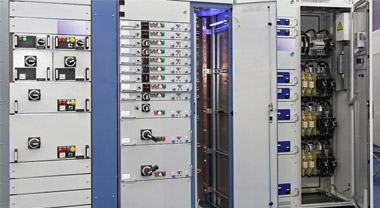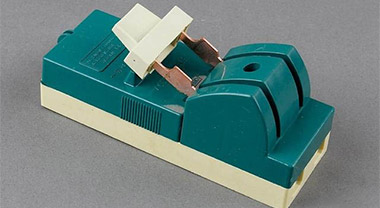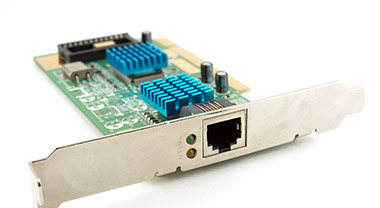Operation method and precautions of high voltage circuit breaker
High-voltage circuit breakers have arc extinguishing capabilities and are the main equipment for circuit breakers. Normally, according to the operation requirements of the grid, some electrical equipment or lines are put into or out of operation. When the electrical equipment or line fails, the protective device acts on the circuit breaker to remove the faulty part from the grid to ensure the normal operation of the non-faulty part of the grid .
1. General rules for circuit breaker operation
(1) Before the circuit breaker is put into operation, check whether the grounding wire is completely removed and whether the anti-misoperation locking device is normal.
(2) Before operation, check that the power supply of the control circuit and auxiliary circuit is normal, the operating mechanism is normal, the various signals are correct, and the meter indication is normal. For the oil circuit breaker, check the oil level and oil color. Check for the vacuum circuit breaker. There is no abnormality in the arc extinguishing chamber. For the SF6 circuit breaker, check that the gas pressure is within the specified range. If it is found that the oil circuit breaker in operation is seriously short of oil, the vacuum circuit breaker is abnormal, or the gas pressure of the SF6 circuit breaker is low, it will send out a blocking operation signal, prohibit operation.
(3) For the circuit breaker that has been out of service for more than 6 months, it should be tested by remote control for 2-3 times before the operation is formally executed. Only after there is no abnormality can it be operated according to the method specified in the operation ticket.
(4) Before operation, check the positions of the corresponding isolating switches and circuit breakers, and confirm that the relay protection has been put into operation according to regulations.
(5) Generally, any circuit breaker that can be operated electrically should not be manually operated on site.
(6) When operating the control handle, do not use too much force to prevent damage to the control switch; do not return too fast to prevent the circuit breaker from closing in short time. During operation, the indications of related voltage, current, power and other meters and the changes of traffic lights should be monitored at the same time.
(7) When operating the switchgear, it should be carried out strictly in accordance with the prescribed procedures to prevent damage to the lock, secondary plug, isolation baffle and grounding switch due to program errors.
(8) After the circuit breaker (open) is closed, go to the site to confirm the body and mechanism (open) closing indicator, the position of the crank arm and the transmission lever, to ensure that the switch is closed correctly (open), and check related Whether the indications of signals and meters, such as ammeter, voltmeter, power meter, etc. are correct, and whether the switch body is abnormal.
(9) Hydraulic (pneumatic) operating mechanism. If the circuit breaker is opened or closed due to abnormal pressure, it is not allowed to unlock without authorization; it is strictly forbidden to use manual levers or jacks to conduct closing operations with electricity; no free release It is strictly forbidden to operate the buckled agency on site.
(10) Due to the increase in system capacity of the oil circuit breaker, when the short-circuit current at the operating site reaches 80% of its rated breaking current, the automatic reclosing should be disabled, and forced transmission is prohibited after the short-circuit fault is opened.
(11) When the actual number of fault opening times of the circuit breaker is only one less than the allowable number of fault opening times, the automatic reclosing of the circuit breaker should be disabled.
2. Handcart type circuit breaker operation
(1) The handcart type circuit breaker is allowed to stay in the operating, testing, and overhauling positions, but not in other positions. After maintenance, it should be pushed to the test position for transmission test, and it can be put into operation only after the test is good.
(2) The handcart type circuit breaker shall be locked by mechanical interlocking handle no matter in the working position or the test position.
(3) When the handcart type circuit breaker is pushed into the cabinet, it should be pushed slowly and vertically. When in the test position, the secondary plug must be inserted into the secondary socket, the closing power supply must be disconnected, and the spring stored energy must be released.
3. Several questions about the operation of circuit breakers
(1) Three-phase operation circuit breaker and split-phase operation circuit breaker. Circuit breakers can be divided into three-phase operation circuit breakers and split-phase operation circuit breakers according to the operation mode. The main contacts of each phase of the split-phase operation circuit breaker are controlled by their respective tripping and closing coils, and can be tripped and closed separately. When the circuit breaker needs single-phase reclosing, the split-phase operation circuit breaker is often used. The three-phase operating circuit breaker has only one closing coil and one or two tripping coils. The circuit breaker drives the operating power through a connecting rod or a hydraulic pressure conduit to close or open the three-phase main contacts. Equipment such as generators, transformers and capacitors in the power system are not allowed to operate separately for each phase, so the circuit breakers used in this type of equipment usually use three-phase operating circuit breakers.
(2) The "remote/local" control handle in the circuit breaker control box and the "remote/local" control handle on the circuit breaker measurement and control screen. There are "remote/local" control handles in the circuit breaker control box and on the circuit breaker measurement and control screen in the main control room, but there are differences between the two. The function of the "remote/local" control handle in the electrical control box of the circuit breaker is that when the handle is selected in the "remote" position, it will connect the remote closing (reclosing) and remote trip circuits, and disconnect the local closing and opening circuits. At this time, the remote (main control room monitoring machine or monitoring center) can perform manual electrical closing (reclosing) and manual electrical opening; when the handle is selected in the "local" position, the remote closing ( Reclosing) and remote trip circuits are connected to the local closing and trip circuits. At this time, manual electrical closing and manual electrical opening can be performed locally. It should be noted that the protection trip circuit is not controlled by the "remote/local" control handle, so no matter the handle is in any state, it will not affect the trip of the protection. The "remote/local" control handle on the circuit breaker measurement and control screen is selected in the "local" position. It can only be used by maintenance personnel to operate the circuit breaker locally. During normal operation, this handle must be placed in the "remote" position. Otherwise, it is impossible to open and close the circuit breaker in the remote place (main control room monitor or monitoring center).




